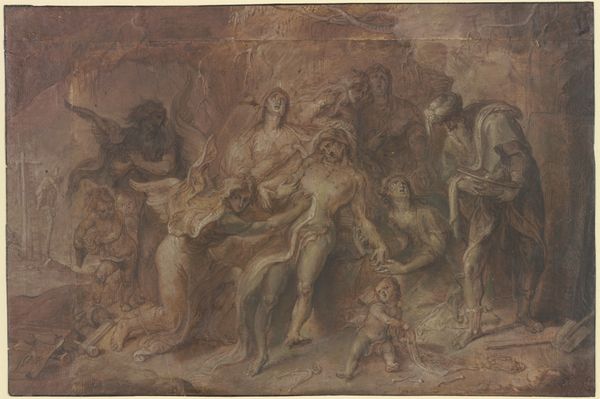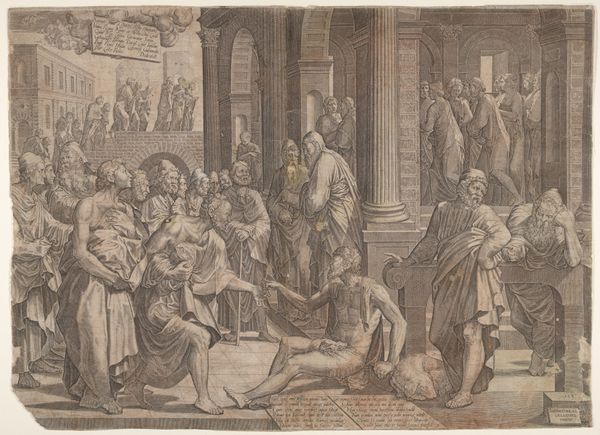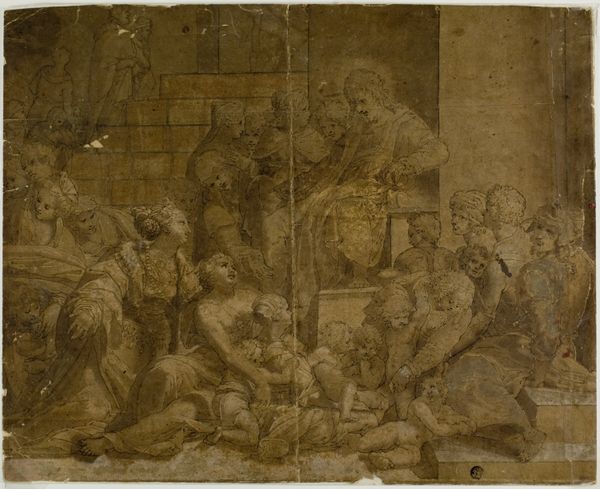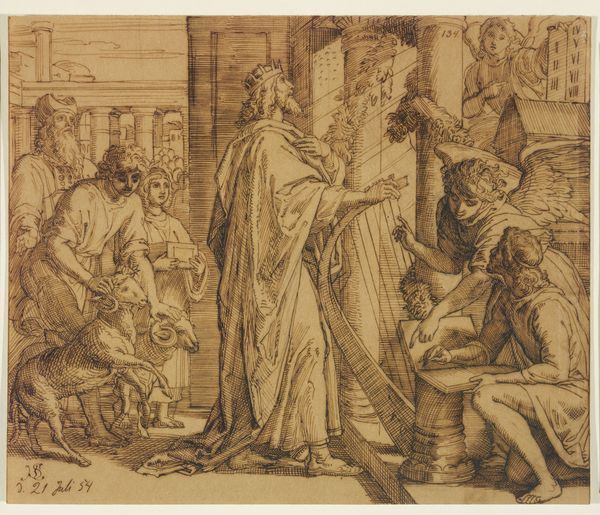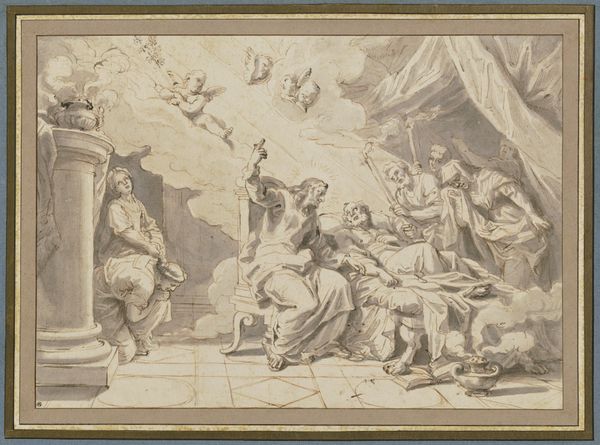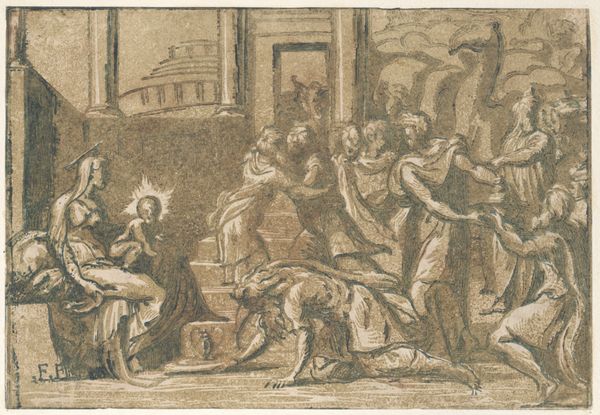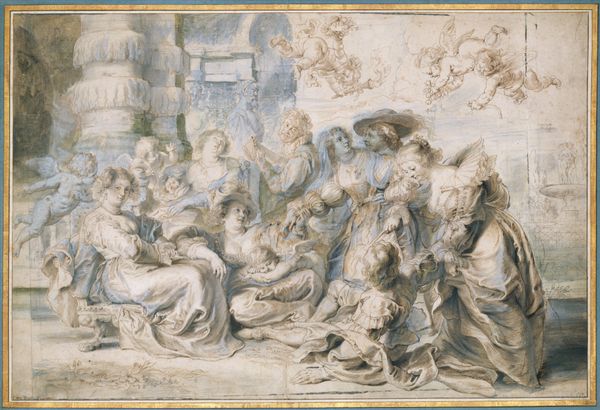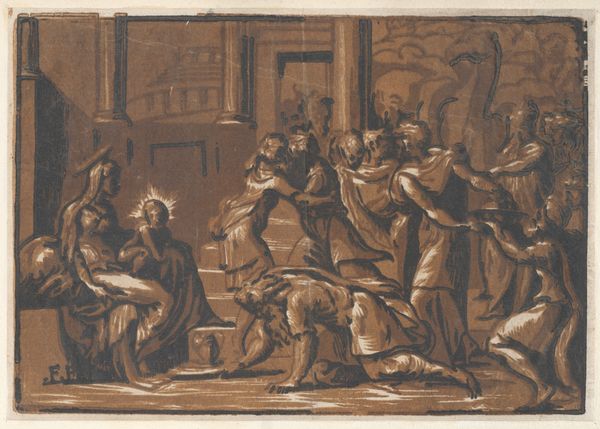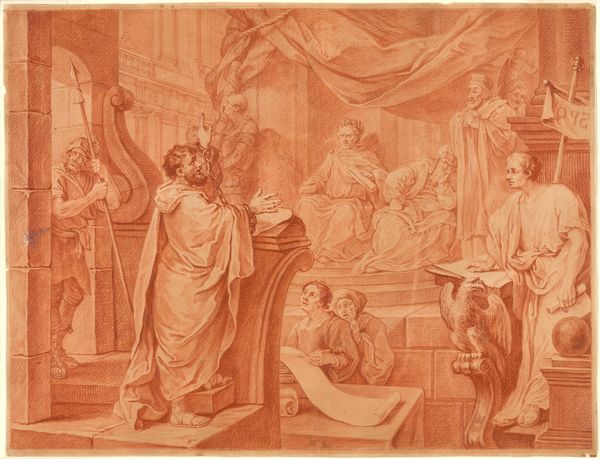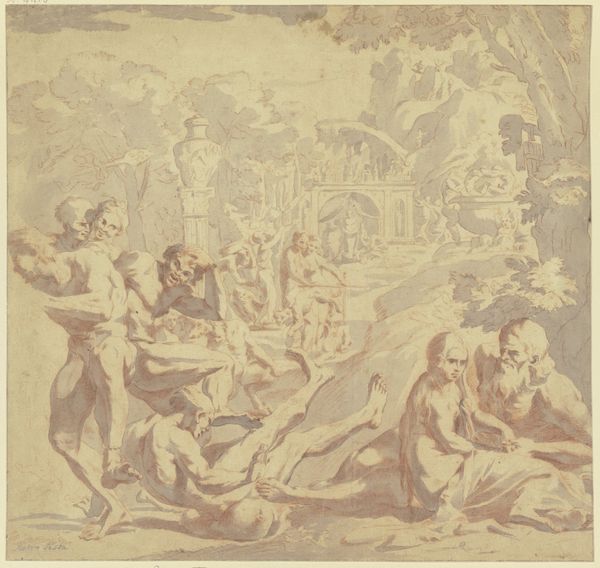
drawing, red-chalk, paper, ink, indian-ink, chalk
#
drawing
#
netherlandish
#
toned paper
#
baroque
#
red-chalk
#
landscape
#
figuration
#
paper
#
11_renaissance
#
ink
#
indian-ink
#
chalk
#
14_17th-century
#
history-painting
#
realism
Copyright: Public Domain
Curator: This is “Flagellation of the Wrongdoers,” a drawing attributed to Jacob Jordaens. It resides here at the Städel Museum and is rendered in red chalk, Indian ink, and heightened with white on toned paper. Editor: My first impression is of a swirling, unsettling chaos. The reddish-brown tones amplify the violence, while the composition feels densely packed, almost claustrophobic. Curator: That’s a great observation. Jordaens often depicted scenes of intense action. The choice of medium reinforces the raw emotion; the chalk lines possess a dynamic quality, mirroring the turbulent subject matter. This resonates within a history of the body—its power but also its subjugation. Editor: Absolutely. And the figures, contorted and struggling, evoke the age-old visual trope of punishment, here seemingly without context. Is Jordaens making a comment on authority, justice, or perhaps simply human nature itself? I see recurring symbols, or symbolic tropes here, like figures looming on horseback above other characters. Curator: The socio-political climate of the 17th century is crucial. Netherlandish art of this era frequently critiques abuses of power, so an implicit commentary is likely. We should also note Jordaens was a devout Calvinist which has everything to do with this composition and the period itself. His visual vocabulary of human suffering may have reflected a desire to explore justice and injustice. Editor: Right. The presence of women and children at the edges…what's their symbolic role? Are they witnesses to injustice, victims themselves, or is Jordaens commenting on family structure within the conflict? Curator: Precisely. The inclusion of women and children introduces another layer, forcing us to examine intersectionality within these displays of power. Their apparent vulnerability accentuates the barbarity, pointing to inherent inequalities present in the structure of authority. We should note the architectural elements too. Editor: Interesting. It’s true they're are both grounding the composition while adding an air of false authority with its presence. After considering our dialogue, my initial feeling of unease deepens; this work offers a disturbing, though necessary reflection of power and vulnerability in human culture. Curator: Indeed. By studying not just the artistic skill but also the underlying narratives concerning injustice, art becomes an indictment and record, holding authority accountable, whether historically or today.
Comments
No comments
Be the first to comment and join the conversation on the ultimate creative platform.
